
Qualitative data is by far the heart and soul of any business venture. But in its raw form, this data isn't worth much. So how do you get to analyze huge chunks of qualitative data within a short time? Well, that's where the best qualitative data analysis software comes in.
Qualitative data is typically generated through open-ended surveys, interview transcripts, texts and documents, and video recordings. Undoubtedly, qualitative data has more depth and is unstructured, making it different from quantitative data. Hold up! Do you understand what qualitative data analysis is?
What is Qualitative Data Analysis?

Qualitative data analysis is the art of structuring, interpreting, and gathering qualitative data to understand it better and what it represents. As I said earlier, qualitative data is unstructured and numerical. Meaning it's challenging to decipher in its natural form.
However, businesses often use this data to interpret how customers value their products or services. More importantly, qualitative data is a rich source of data-driven decisions for any company. With the risk of sounding like a broken record, analyzing this data can be nerve-wracking.
That's why the best qualitative data analysis software is now becoming the most sort after digital item. With this software, you can easily extract the relevant information from the raw data and use it to make profitable or future business decisions.
The Best Qualitative Data Analysis Software: Analysis Methods
There are currently several techniques that can be used to determine the specific objectives of the research. These analysis methods include:
· Content Analysis
Content analysis is a popular method of qualitative analysis. This technique makes it easy to identify patterns in content from the text and group them into themes, concepts, and words. Thematic analysis is the core of the content analysis. What's more, content analysis helps identify relationships between grouped content data.
· Thematic analysis
This analysis technique aids in interpreting the message behind the words people use. The basic idea here is to discover repeating themes found in the text. The themes provide insights into the data that can be quantified. Generally, the information that's derived in this technique is in code.
· Narrative analysis
This type of analysis leverages the stories people tell and the language they use to decipher the information. Narrative analysis is beneficial when understanding the customer's point of view. More importantly, a narrative analysis makes it easy to summarize the outcome of a specific case study.
· Discourse analysis
Another type of analysis is discourse. This form is applicable when trying to understand cultural, power, and political dynamics in a specific situation.
The focus is on how the users express themselves in different social events. Brands commonly use this analysis technique to understand customers' feelings about their products or service.
· Grounded analysis
The grounded technique is beneficial when there's less information about the subjects. This analysis starts by formulating a theory around the single data. That means the theory or technique is grounded. However, this technique is based on actual data and is not speculative.
Top 4 Steps of Qualitative Data Analysis

For the best qualitative data analysis software to do its job, you'll need to take care of a few things first. And we've broken them down into four simple steps, which include;
1. Conduct research
Before anything, you need to gather the data for analysis. Here, you can follow the classical way of gathering data, for instance, by conducting surveys and interviews. There are other data collection forms, but for this case, let's stick with surveys and interviews. Or you can choose to use existing data from customer feedback.
2. Organize your Qualitative Data
Once you've gathered all the data, you now have to find the ideal way to organize it. Before your data can be analyzed, it needs to be organized in a single place. And why is that important? Consistency! When all the data is accessible at one point, you will have an easier time analyzing it and making informed decisions. An excellent way to organize your data is by using spreadsheets, feedback repositories, or CAQDAS.
3. Code Your Data
Once the data is organized, it's time to code it. This step helps to extract meaningful insight from the content. But don't be spooked by the term 'coding.' In fact, coding is simply a labeling technique that helps to organize your data further to identify the themes quickly. With this system, you can also find the relationship between different themes.
An excel sheet is quite common when coding your work, but there are other software you can utilize, for instance, CAQDAS, EnjoyHQ, IBM SPSS, and ASCRIBE. All these software will need a bit of getting used to so you can use them. However, if you want something fast and reliable without coding, Speak Ai is perfect. Speak Ai automates this process for you, and the results are more accurate than this manual process.
4. Analyze and Report Your Qualitative Data
This step tells a story of the data you've collected. This step involves creating a visual representation of your data to make it easy to understand. The process of getting insightful data from the code isn't straightforward. It requires you to scour through the code and find meaningful correlations between the data.
After the code is fully developed, it's time to communicate a narrative to your stakeholders. This report is typically in graphs and other visualization software appropriate for your qualitative data. Without the best qualitative analysis software, this process can be tedious. Ask anyone who does this manually, and they'll confirm that it's not as easy as taking a walk in the park.
The Best Qualitative Data Analysis Software
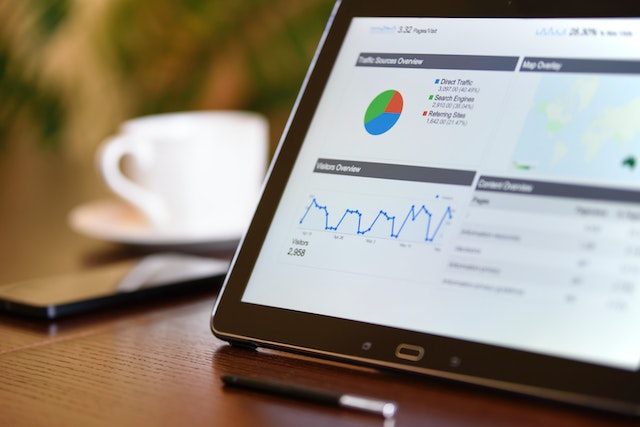
Business owners and other experts have leaned towards using manual methods for ages. That's because automation software that could effectively analyze qualitative data still needed a little more research. However, that's no longer the case. We now have a plethora of qualitative analysis software that can handle repetitive tasks.
However, we have two dominant software programs that rank up as the best qualitative data analysis software: NLP (Natural Language Processing) and Data Visualization. Both help with qualitative data analysis. But if you don't know where to start, talk to Speak Ai.
How To Use The Best Large Language Models With Speak
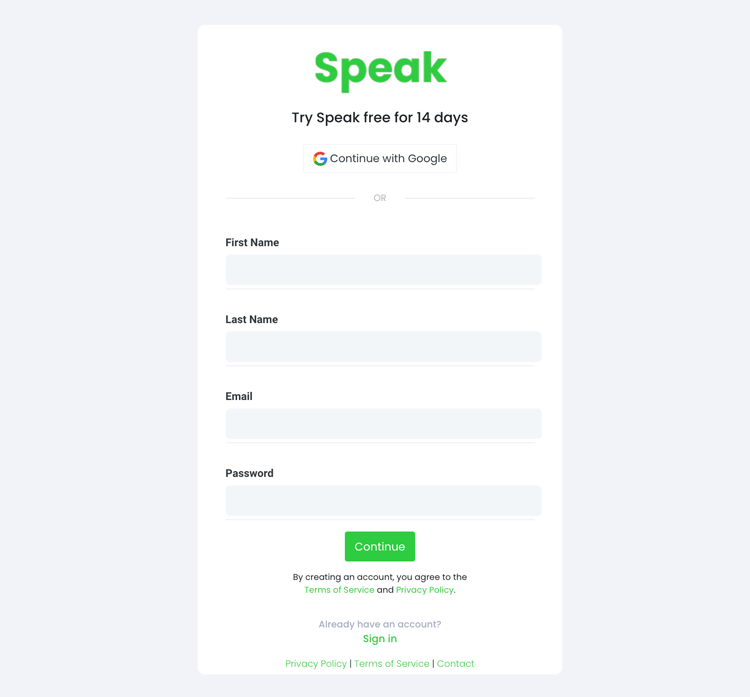
Step 1: Create Your Speak Account
To start your transcription and analysis, you first need to create a Speak account. No worries, this is super easy to do!
Get a 7-day trial with 30 minutes of free English audio and video transcription included when you sign up for Speak.
To sign up for Speak and start using Speak Magic Prompts, visit the Speak app register page here.
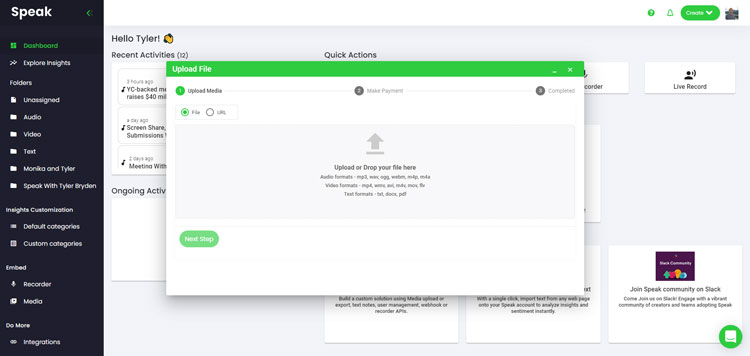
Step 2: Upload Your Language Data
We typically recommend MP4s for video or MP3s for audio.
However, we accept a range of audio, video and text file types.
You can upload your file for transcription in several ways using Speak:
Accepted Audio File Types
- MP3
- M4A
- WAV
- OGG
- WEBM
- M4P
Accepted Video File Types
- MP4
- M4V
- WMV
- AVI
- MOV
- FLV
Accepted Text File Types
- TXT
- Word Doc
CSV Imports
You can also upload CSVs of text files or audio and video files. You can learn more about CSV uploads and download Speak-compatible CSVs here.
With the CSVs, you can upload anything from dozens of YouTube videos to thousands of Interview Data.
Publicly Available URLs
You can also upload media to Speak through a publicly available URL.
As long as the file type extension is available at the end of the URL you will have no problem importing your recording for automatic transcription and analysis.
YouTube URLs
Speak is compatible with YouTube videos. All you have to do is copy the URL of the YouTube video (for example, https://www.youtube.com/watch?v=qKfcLcHeivc).
Speak will automatically find the file, calculate the length, and import the video.
If using YouTube videos, please make sure you use the full link and not the shortened YouTube snippet. Additionally, make sure you remove the channel name from the URL.
Speak Integrations
As mentioned, Speak also contains a range of integrations for Zoom, Zapier, Vimeo and more that will help you automatically transcribe your media.
This library of integrations continues to grow! Have a request? Feel encouraged to send us a message.
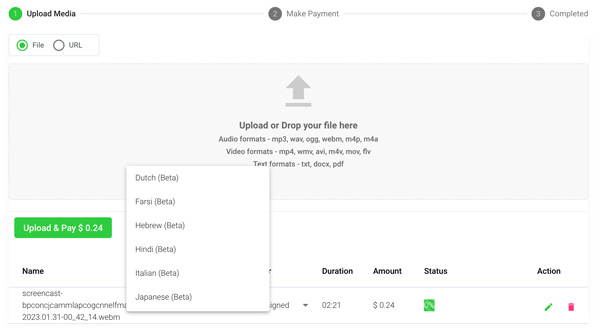
Step 3: Calculate and Pay the Total Automatically
Once you have your file(s) ready and load it into Speak, it will automatically calculate the total cost (you get 30 minutes of audio and video free in the 7-day trial - take advantage of it!).
If you are uploading text data into Speak, you do not currently have to pay any cost. Only the Speak Magic Prompts analysis would create a fee which will be detailed below.
Once you go over your 30 minutes or need to use Speak Magic Prompts, you can pay by subscribing to a personalized plan using our real-time calculator.
You can also add a balance or pay for uploads and analysis without a plan using your credit card.
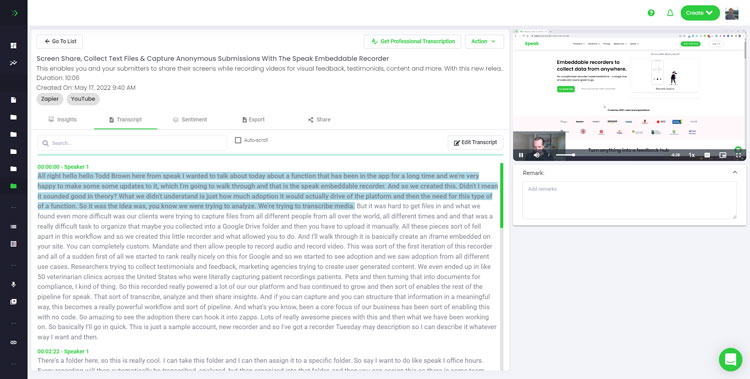
Step 4: Wait for Speak to Analyze Your Language Data
If you are uploading audio and video, our automated transcription software will prepare your transcript quickly. Once completed, you will get an email notification that your transcript is complete. That email will contain a link back to the file so you can access the interactive media player with the transcript, analysis, and export formats ready for you.
If you are importing CSVs or uploading text files Speak will generally analyze the information much more quickly.

Step 5: Visit Your File Or Folder
Speak is capable of analyzing both individual files and entire folders of data.
When you are viewing any individual file in Speak, all you have to do is click on the "Prompts" button.
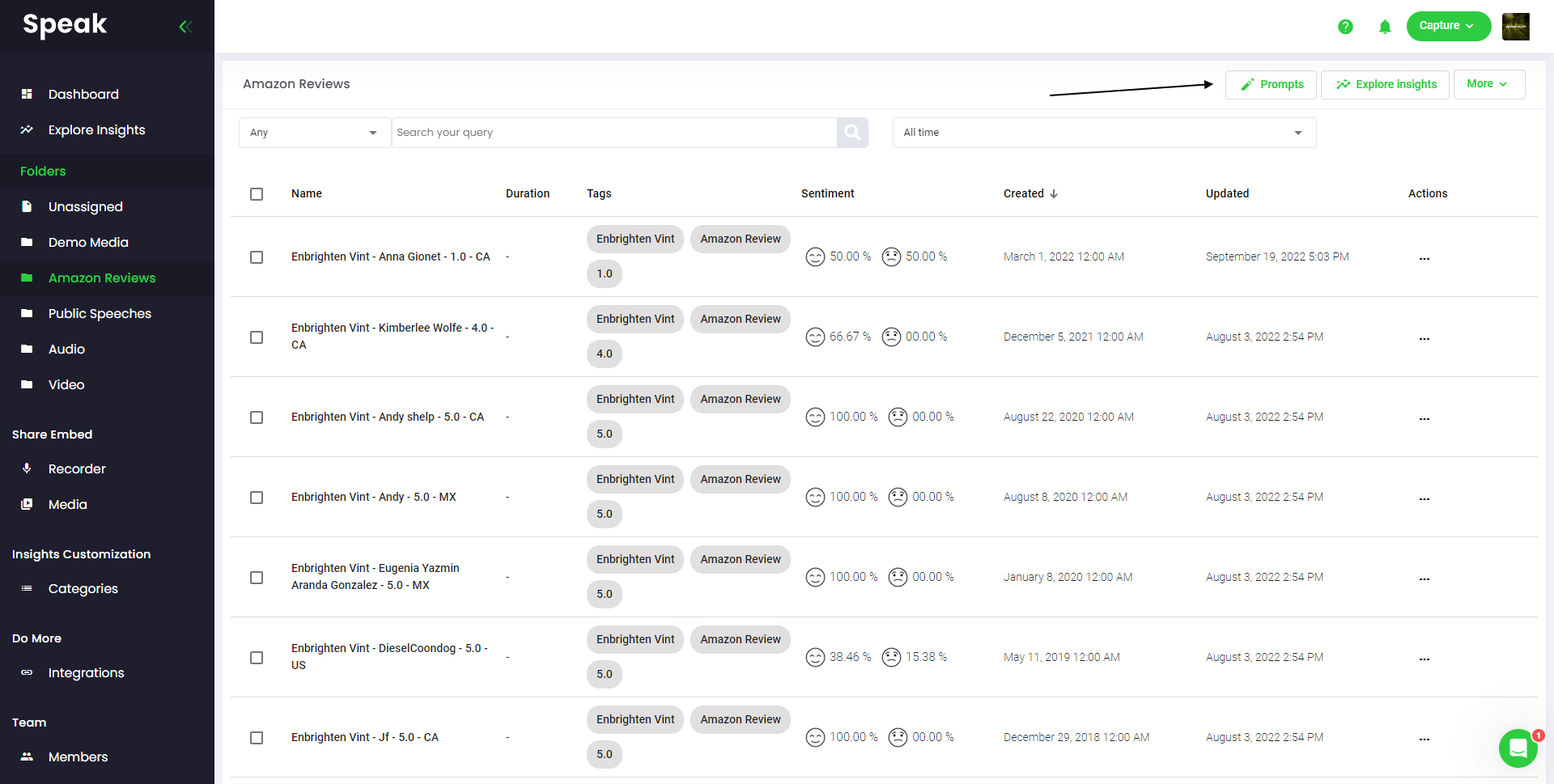
If you want to analyze many files, all you have to do is add the files you want to analyze into a folder within Speak.
You can do that by adding new files into Speak or you can organize your current files into your desired folder with the software's easy editing functionality.
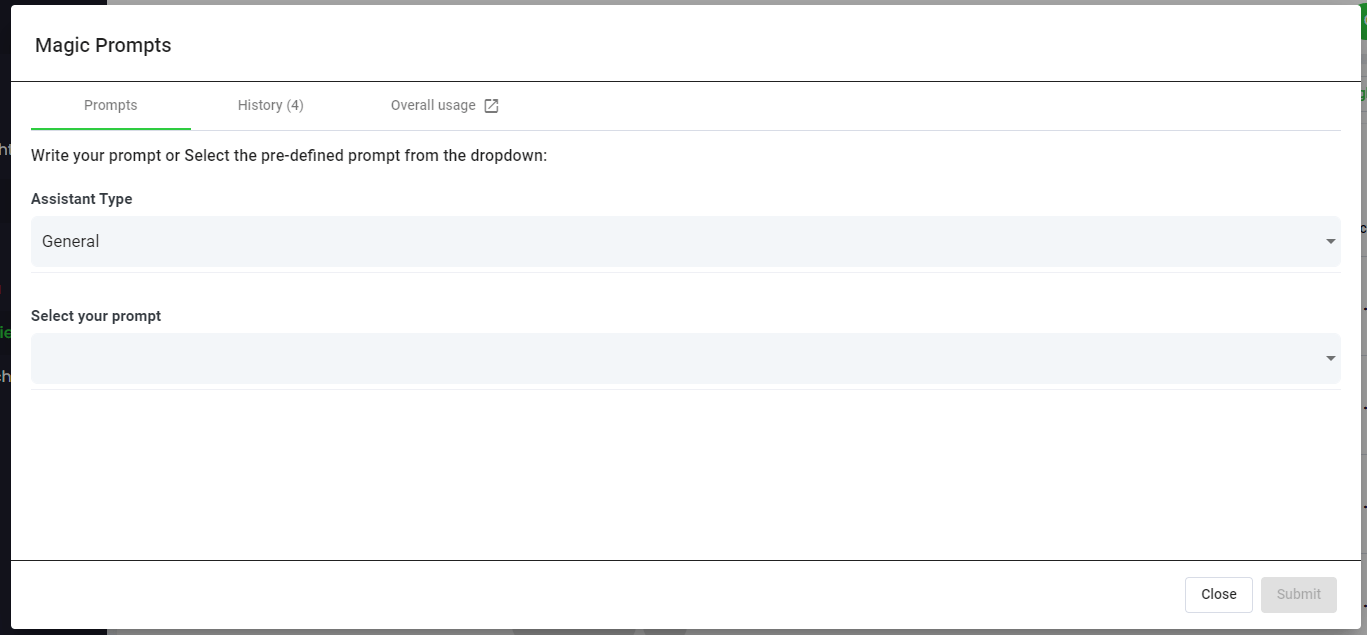
Step 6: Select Speak Magic Prompts To Analyze Your Data
What Are Magic Prompts?
Speak Magic Prompts leverage innovation in artificial intelligence models often referred to as "generative AI".
These models have analyzed huge amounts of data from across the internet to gain an understanding of language.
With that understanding, these "large language models" are capable of performing mind-bending tasks!
With Speak Magic Prompts, you can now perform those tasks on the audio, video and text data in your Speak account.

Step 7: Select Your Assistant Type
To help you get better results from Speak Magic Prompts, Speak has introduced "Assistant Type".
These assistant types pre-set and provide context to the prompt engine for more concise, meaningful outputs based on your needs.
To begin, we have included:
- General
- Researcher
- Marketer
Choose the most relevant assistant type from the dropdown.

Step 8: Create Or Select Your Desired Prompt
Here are some examples prompts that you can apply to any file right now:
- Create a SWOT Analysis
- Give me the top action items
- Create a bullet point list summary
- Tell me the key issues that were left unresolved
- Tell me what questions were asked
- Create Your Own Custom Prompts
A modal will pop up so you can use the suggested prompts we shared above to instantly and magically get your answers.
If you have your own prompts you want to create, select "Custom Prompt" from the dropdown and another text box will open where you can ask anything you want of your data!
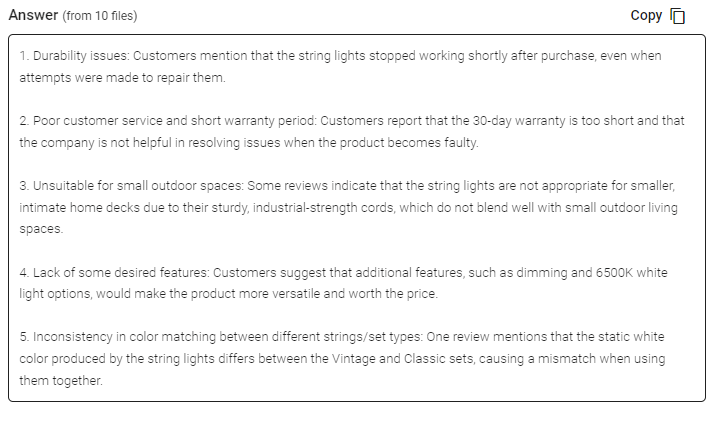
Step 9: Review & Share Responses
Speak will generate a concise response for you in a text box below the prompt selection dropdown.
In this example, we ask to analyze all the Interview Data in the folder at once for the top product dissatisfiers.
You can easily copy that response for your presentations, content, emails, team members and more!
Speak Magic Prompts As ChatGPT For Interview Data Pricing
Our team at Speak Ai continues to optimize the pricing for Magic Prompts and Speak as a whole.
Right now, anyone in the 7-day trial of Speak gets 100,000 characters included in their account.
If you need more characters, you can easily include Speak Magic Prompts in your plan when you create a subscription.
You can also upgrade the number of characters in your account if you already have a subscription.
Both options are available on the subscription page.
Alternatively, you can use Speak Magic Prompts by adding a balance to your account. The balance will be used as you analyze characters.
Completely Personalize Your Plan 📝
Here at Speak, we've made it incredibly easy to personalize your subscription.
Once you sign-up, just visit our custom plan builder and select the media volume, team size, and features you want to get a plan that fits your needs.
No more rigid plans. Upgrade, downgrade or cancel at any time.
Claim Your Special Offer 🎁
When you subscribe, you will also get a free premium add-on for three months!
That means you save up to $50 USD per month and $150 USD in total.
Once you subscribe to a plan, all you have to do is send us a live chat with your selected premium add-on from the list below:
- Premium Export Options (Word, CSV & More)
- Custom Categories & Insights
- Bulk Editing & Data Organization
- Recorder Customization (Branding, Input & More)
- Media Player Customization
- Shareable Media Libraries
We will put the add-on live in your account free of charge!
What are you waiting for?
Refer Others & Earn Real Money 💸
If you have friends, peers and followers interested in using our platform, you can earn real monthly money.
You will get paid a percentage of all sales whether the customers you refer to pay for a plan, automatically transcribe media or leverage professional transcription services.
Use this link to become an official Speak affiliate.
Check Out Our Dedicated Resources📚
Book A Free Implementation Session 🤝
It would be an honour to personally jump on an introductory call with you to make sure you are set up for success.
Just use our Calendly link to find a time that works well for you. We look forward to meeting you!
Speak Ai is a company that specializes in providing software that makes your work and business experience seamless. That said, join 150,000+ teams and individuals worldwide who rely solely on Speak Ai to analyze their qualitative data to gain valuable insights. Here's your one-time chance to get a trial or even book a demo to optimize your workflow. So, what are you waiting for?



